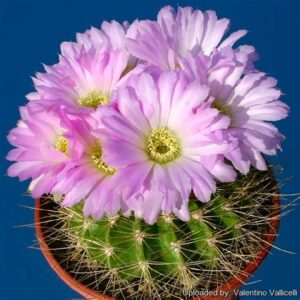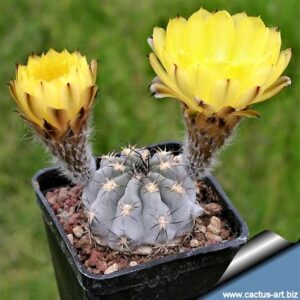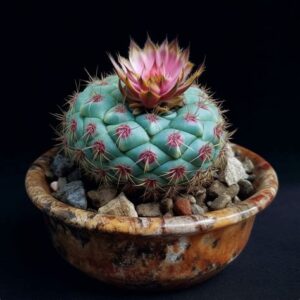The world of cacti is teeming with an exceptional assortment of species, one of which is the Acanthocalycium aurantiacum. Known for its intriguing morphology and vibrant blooms, this cactus also brings forth an important discussion on cold hardiness. But just how well can this spiny plant withstand lower temperatures? As we delve into the factors affecting its frost tolerance, one must ask: can a delicate balance of warmth and chill cultivate a flourishing relationship with this exotic succulent?
The nuances of cold hardiness can be complex, particularly with a species as unique as Acanthocalycium aurantiacum. Understanding its physiological adaptations, environmental requirements, and potential cultivation challenges can offer invaluable insights for enthusiasts and growers alike.
Exploration of the ideal cultivation conditions, as well as the implications of colder climates, provides a comprehensive foundation for effective cactus care. This article will illuminate the intricacies surrounding Acanthocalycium aurantiacum’s cold hardiness and empower cultivators to navigate the potential challenges with foresight and knowledge.
To commence this journey, we will explore the natural habitat of Acanthocalycium aurantiacum, followed by an examination of its cold resistance factors, and finally, practical advice for cultivation in non-native settings.
Understanding the Natural Habitat
Originally hailing from the arid regions of Argentina, the Acanthocalycium aurantiacum thrives in a unique ecological niche. This cactus typically flourishes in semi-desert environments characterized by summer rains and dry winters, leading to a quintessential xerophytic lifestyle.
In its native landscape, Acanthocalycium aurantiacum experiences significant temperature fluctuations. Day-time warmth can reach upwards of 30°C (86°F), while nighttime temperatures may drop to around 0°C (32°F) or slightly below. This stark contrast plays a crucial role in shaping the plant’s adaptation strategies toward both heat and cold.
Understanding these natural conditions sets an essential framework when evaluating how well this cactus adapts to various temperature regimes. While the species possesses some degree of cold tolerance, it is important to determine the threshold beyond which environmental stress may occur.
The Cold Hardiness Factors
Several intrinsic and extrinsic factors contribute to the cold hardiness of Acanthocalycium aurantiacum. These include physiological characteristics, historical climate exposure, and the presence of cold acclimatization mechanisms. To further grasp these aspects, a closer examination reveals a tapestry of complex relationships.
Physiologically, Acanthocalycium aurantiacum relies on specialized tissues and cellular structures to mitigate the effects of low temperatures. The plant’s cuticle, waxy coating, and areole structures assist in retaining moisture during colder months while protecting the cactus from external elements. Additionally, having a succulent structure allows the plant to store water, which can be a crucial adaptive feature during leaner seasons.
Moreover, historical climate exposure plays a pivotal role in the plant’s resilience. The species has adapted over generations to endure brief frost events and freezing temperatures. Such evolutionary processes result in a relative cold hardiness, rendering Acanthocalycium aurantiacum capable of surviving light frosts—typically down to approximately -5°C (23°F). However, prolonged exposure to sub-zero temperatures can spell disaster, leading to tissue damage and potentially fatal outcomes.
Another noteworthy phenomenon is cold acclimatization, which allows the cactus to undergo physiological adjustments when experiencing lowered temperatures. As autumn sets in, the plant enters a phase of dormancy, diverting energy away from growth and into fortifying its cellular structures. This preparation can enhance cold tolerance, enabling the cactus to better withstand frosty conditions during winter months.
Yet, despite its adaptations, there are inherent limits to the cold hardiness of Acanthocalycium aurantiacum. Growing in non-native climates that may experience harsher winters can pose significant challenges for those aspiring to cultivate this cactus successfully.
Cultivation Best Practices in Non-Native Climates
For gardeners located in regions with more severe winter conditions, nurturing Acanthocalycium aurantiacum requires a strategic approach. While this cactus may exhibit an impressive degree of cold tolerance, ensuring its survival necessitates deliberate planning and considerations. Here are some best practices for cultivation:
One of the most critical practices is choosing the right location. Planting Acanthocalycium aurantiacum in a spot that receives ample sunlight can help foster healthy growth. Positioning the cactus against a south-facing wall can provide warmth and shelter from harsh winds. During cold spells, utilizing thermal mass—such as stones or concrete—can also create a microclimate that offers additional protection.
Furthermore, modifying the growing medium can significantly affect cold hardiness. A well-draining soil mix rich in organic matter can facilitate proper moisture retention without waterlogging, thus preventing freeze damage to roots. Adding perlite or sand to the soil mix enhances drainage, ultimately safeguarding the fragile roots during periods of low temperatures.
An additional precaution is employing protective coverings during particularly frigid nights. Frost cloth, blankets, or temporary greenhouses can help mitigate the impacts of freezing temperatures. Furthermore, utilizing heat sources such as incandescent bulbs or heating cables can offer supplementary warmth during extreme weather events.
Watering practices must also be amended to accommodate the plant’s dormant phase. During the winter, it is essential to limit watering, as excess moisture coupled with freezing temperatures can lead to root rot. Allowing the plant to dry out between waterings is a pivotal aspect of ensuring Acanthocalycium aurantiacum’s cold hardiness remains intact.
A Concluding Thought on the Journey of Cultivating Acanthocalycium Aurantiacum
The adventure of growing Acanthocalycium aurantiacum in challenging climates is a multifaceted one that balances both the possibilities and limitations of its cold hardiness. By delving into the plant’s natural habitat, recognizing its beneficial adaptations, and employing effective cultivation strategies, enthusiasts can cultivate an enticing tropical allure within their gardens, even in colder regions.
While the journey may present obstacles, the beauty and resilience of Acanthocalycium aurantiacum can embolden any gardener. As growers look to nurture this enchanting specimen, they are reminded that the delightful quirks of nature often weave the most compelling stories—the tale of cultivating cacti being one of them. The playful question remains: in the quest for warmth and chill, can you unlock the secrets to nurturing cold-hardy cacti through the seasons? The answers await in your garden.





Leave a Comment